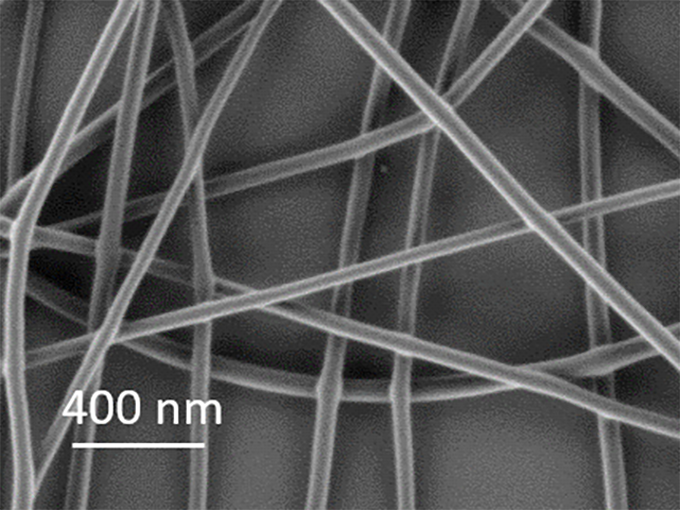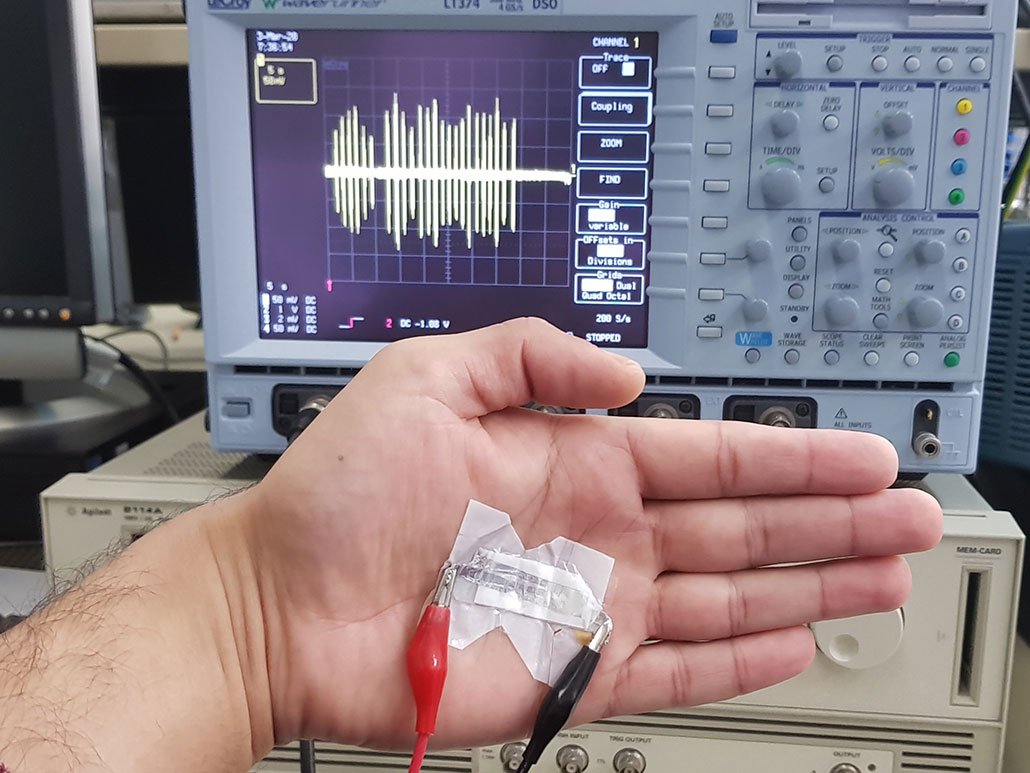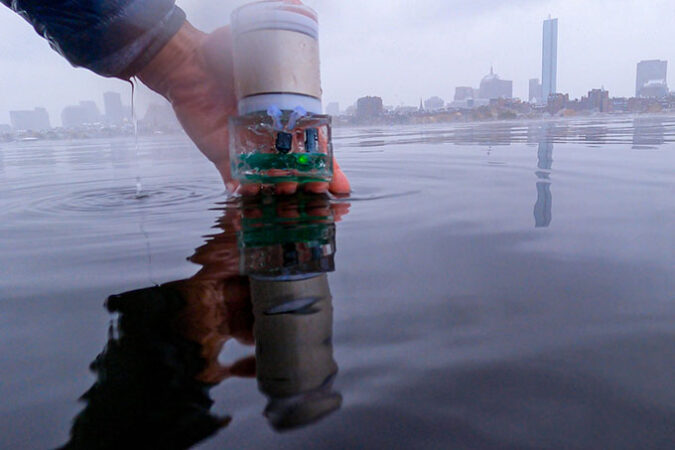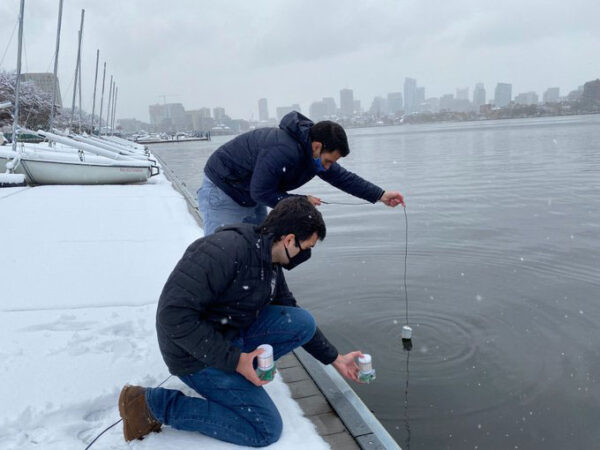Bye-bye batteries? Power a phone with fabric or a beacon with sound
These piezoelectric materials turn their movements into electricity

Imagine never having to worry about your phone’s battery when you’re on the go. A new technology might someday allow the fabric in your clothes to charge it.
DaniloAndjus/E+/Getty Images
Imagine if the swishing threads inside your jeans pocket could charge your cell phone. Picture sensors that don’t need batteries because they make their own power. Both and more may soon be possible, thanks to new piezoelectric materials and devices.
Pressing, squashing or twisting such materials produces an electric charge. Add a circuit to capture and store that charge, and you can convert motion into electricity.
Piezoelectric (Pee-AY-zoh-ee-LEK-trik) materials are not new. But getting them to make enough electricity to do useful work is. Today, most such materials produce only a few microwatts of power. For comparison, it takes some 8 million microwatts (8 watts) to power a typical LED light bulb. Most of today’s piezoelectric materials also are ceramic. Hard but easily breakable, they may not last very long.
But two new projects offer a taste of how these unusual materials might power up devices so that they can operate in novel environments. One transforms fabrics. The other becomes a sonar-like beacon to aid navigation by underwater robots and more.
Empowering fabric
Kamal Asadi wondered how he might create a pocket that could charge a cell phone. Asadi is a physicist at the University of Bath in England. To create such a charging pocket, he’d need a soft and stretchy piezoelectric material. That eliminates ceramic ones. But nylon might work.

This tough, stretchy, lightweight plastic shows up in everything from swimsuits and sportswear to fishing line and guitar strings. Most nylon is not piezoelectric. But some types of nylon have this property — if and only if you first coax it to form a certain crystal structure. Getting it into that special structure as a long, thin thread “is difficult and challenging,” Asadi notes. But his team recently found a way to do that.
First, the researchers dissolved nylon pellets in a strong acid. Then they used a technique called electrospinning to shoot a very thin thread of the liquid out of a needle. The thread dries as it lands on a plate.
The first time the team tried this, though, the dried thread wasn’t piezoelectric. The problem? “Acid molecules like to stay inside nylon,” explains Asadi. “They are extremely happy and relaxed. They don’t want to go out.”
So he added another ingredient. Called acetone (ASS-ih-toan), it’s the same stuff inside most nail polish remover. This chemical carried the acid out of the nylon thread as it dried. Says Asadi: “It’s as if it says to the acid, “OK, good job. You dissolved [the nylon]. Now it’s time to leave.”
To demonstrate their new fibers were piezoelectric, Asadi hooked up a mat made from them to a circuit. A student then placed the mat on his palm. Opening and closing his hand was all it took to generate electricity.
It wasn’t nearly enough to charge a cell phone. “I wish it was,” says Asadi. But with a lot more work, he says, such a feat should be possible. Asadi’s team described its findings October 23 in Advanced Functional Materials.
This was one of the first tests to show that nylon threads can turn body movements into electricity. And that’s exciting enough for most researchers.

“This is really stretchable,” says Zhiqun Daniel Deng. He’s an engineer and ocean scientist who was not involved in the research. He works at Pacific Northwest National Laboratory in Richland, Wash. Nylon fibers could make enough electricity to run a low-power sensor, Deng says. But first Asadi’s team would have to add a circuit to manage that electricity.
Low-power piezoelectric sensors could help build the Internet of Things. That is a system of sensors that share information about people, places and things in real time.
For example, piezoelectric sensors in roads could detect the motion of vehicles to track traffic or to light upcoming road signs or streetlights as needed. Sensors on the body or in clothing could monitor health or track fitness, powering themselves from the motion as someone walks. Sensors that monitor the ocean could power themselves from the motion of water.
Finding your way underwater
Engineers Fadel Adib and Reza Ghaffarivardavagh at the Massachusetts Institute of Technology in Cambridge are working on one such undersea system. They first used piezoelectric materials to build a sensor to measure sea temperatures or water pressure. Now they are modifying the sensor to act somewhat like an underwater lighthouse. Instead of light, it would beam audible signals to help underwater machines navigate.
Radio signals bounce easily between satellites, cell phones and other devices, notes Ghaffarivardavagh. Those signals help us to find our way via GPS. But when radio signals hit water, “they die very fast,” he explains. Sounds waves, however, travel well through water. Dolphins and some whales use a technique called echolocation to find their way around. They emit sound, then listen for its echo to bounce off of anything nearby. That echo gives the animal details about its surroundings.
Undersea robots, submarines and devices that track fish or other sea animals use a similar technique. To figure out a precise location, though, these machines need a network of fixed beacons that listen for their sounds and then tell them exactly where they are.

To monitor aquatic animals and their underwater world, Deng often uses networks of such beacons. But they have to be replaced when their batteries die, which can be a huge problem. “Sometimes,” he says, “you put them out for a year, recover them, and realize one never worked. That’s our worst nightmare as researchers.”
In contrast, the MIT group’s sensors would never need batteries. They power themselves using the vibrations of sound waves hitting them. Piezoelectric ceramics turn those vibrations into electricity.

A circuit uses that electricity to wake up the sensor. It then bounces sound waves back out into the water. The sensor doesn’t wake up for all types of sound, though. It listens for frequencies that human machines or tracking devices send out.
During one cold Boston winter day in early 2020, Ghaffarivardavagh’s team tromped out in the snow to test their sensors in the Charles River. Sound waves triggered those sensors to wake up and start working. The researchers described their novel technology in November at the Association of Computing Machinery’s 19th Workshop on Hot Topics in Networks.
The sensors do not yet transmit their signals far enough for Deng and other ocean scientists to use. And their accuracy could be better, too. But if the MIT group is able to improve its technology, Deng hopes to someday use it to track marine animals and fish, including salmon, eels and shad.
“We know more about the moon than underwater,” says Ghaffarivardavagh. Maybe, in the future, this will no longer be true, he says, thanks in part to piezoelectric materials.







